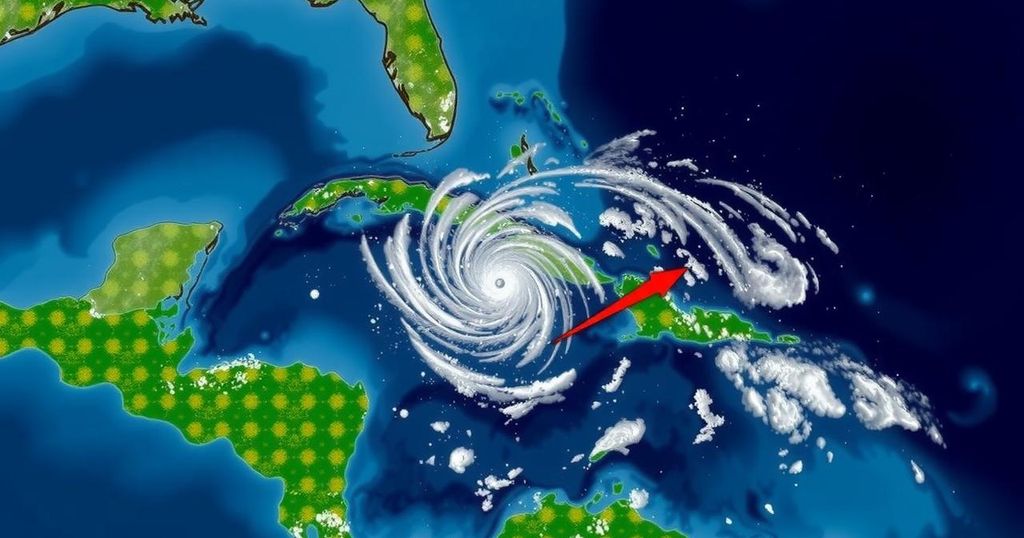Hurricane Rafael has intensified to Category 3 with 120 mph winds but is expected to weaken while moving away from Florida through the Gulf of Mexico. It caused significant disruption in Cuba and continues to create hazardous swells along the Gulf Coast. The Atlantic hurricane season is active from June 1 to November 30, necessitating ongoing vigilance from coastal residents.
The National Hurricane Center has reported that Hurricane Rafael has intensified into a Category 3 hurricane, boasting sustained winds of 120 mph. The latest forecasts indicate that Rafael is charting a course away from Florida, instead traveling through the Gulf of Mexico, where it is anticipated to weaken over the forthcoming days. This hurricane significantly impacted western Cuba, leading to widespread power outages before it reintensified after moving into the Gulf. Meteorological observations suggest that Rafael’s trajectory is influenced by a mid-level ridge pushing it westward, preventing any imminent threat to the Florida coastline. Despite its current categorization, increasing wind shear is expected to cause a gradual decrease in its wind intensity. Nevertheless, Rafael is generating hazardous swells that may lead to perilous surf and rip currents along the Gulf Coast in the coming days, necessitating attention from those in the region. While a trough of low pressure near Puerto Rico generates heavy rain and thunderstorms, its potential for development remains low. The National Hurricane Center is vigilantly monitoring this system, along with a variety of others across the tropics. They provide valuable resources, such as spaghetti models that illustrate forecast paths to better inform residents. It is noteworthy that the Atlantic hurricane season spans from June 1 to November 30, covering the northern Atlantic Ocean, Caribbean Sea, and Gulf of Mexico. Residents are encouraged to remain alert and prepared as the season progresses and new storms may emerge.
Hurricane Rafael serves as a critical reminder of the ongoing Atlantic hurricane season, which officially commences on June 1 and concludes on November 30. During this period, meteorologists closely monitor systems across various regions, including the Gulf of Mexico and the Caribbean. The National Hurricane Center plays an essential role in tracking these storms, issuing advisories and forecasts based on their movements and potential impacts. It is vital for residents in storm-prone areas to stay informed and prepared throughout the season.
In summary, Hurricane Rafael has evolved into a Category 3 storm, currently situated in the Gulf of Mexico and moving away from the Florida coastline. While the hurricane is expected to weaken due to increasing wind shear, its generated swells present a danger to coastal areas. Additionally, vigilance is warranted as the Atlantic hurricane season continues until late November, with other weather systems being monitored closely by the National Hurricane Center. Preparedness is key for residents during this tumultuous time.
Original Source: www.timesreporter.com






